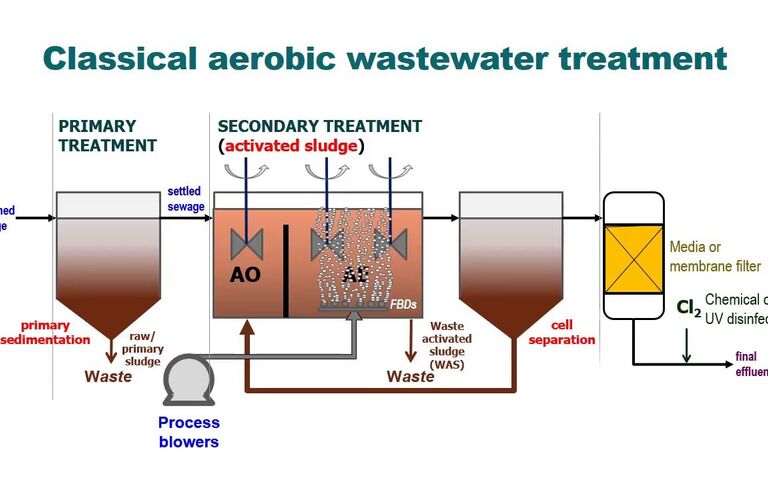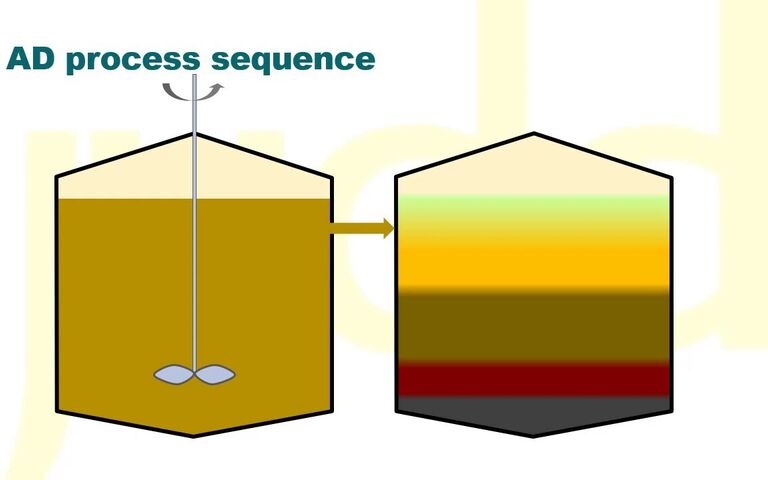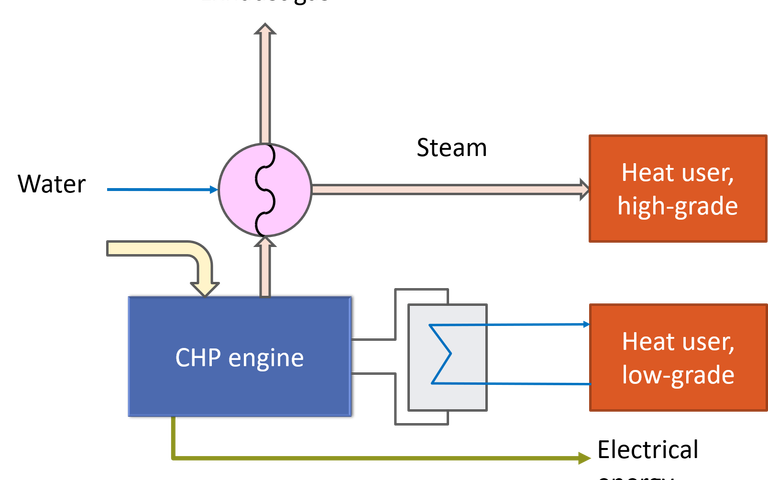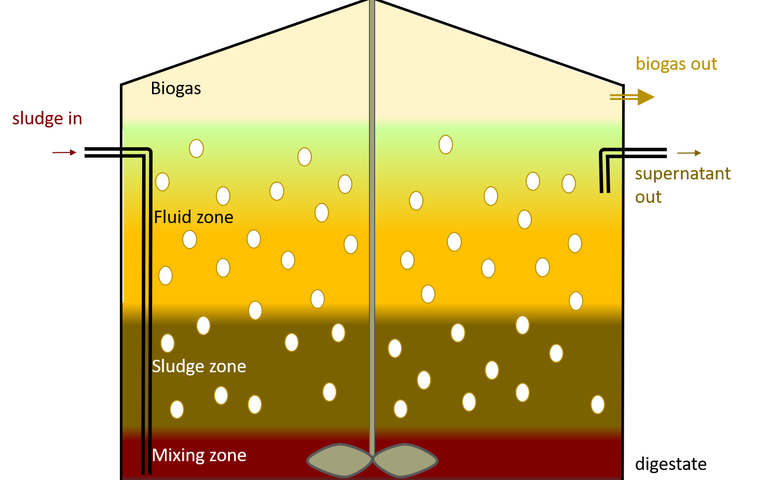Anaerobic digestion and antibiotics/ARGs – ten research papers

Anaerobic digestion and antibiotics/ARGs
Our list is presented in reverse chronological order without preference. It was compiled by Simon Judd in August 2020, and may be updated in future as new papers are published.
This selection of abstracts − sourced from the SCOPUS database − concerns the arising and fate of antibiotics and antibiotic (or antimicrobial) resistant genes (ARGs) in the anaerobic digestion process.
The fact that huge and justifiable concern over the fate of antibiotic residues and the proliferation of antibiotic resistant genes has permeated the field of anaerobic digestion is unsurprising. The potentially catastrophic impact of the accumulated resistance in the environment to antibiotics has naturally precipitated a huge amount of research in this area of wastewater quality and treatment generally – over 1000 papers in the past decade, according to the SCOPUS database.
What is striking, however, is the dominance of papers from Chinese academic institutions. Of the 58 papers published between the start of 2015 and end of August 2020 featuring the terms ‘anaerobic digestion’, ‘resist-’, and either ‘antibiot-’ or ‘antimicrob-’ in their title, 74% derive from China. These figures exclude four papers published in Chinese journals.
This research area is also very recent. According to this search basis, only six papers were published prior to 2015, five of them in 2013 or 2014.
There is a predominance of papers based on livestock wastewater, since this represents a significant pathway for the ARGs into the environment. Only one such article – a review from earlier this year – is included in our list. The other papers in our list are based on various impacts on the AD process:
- impacts of specific antibiotics on methanogens and/or methane production for both municipal and pharmaceutical effluent sludge
- thermal hydrolysis pretreatment impacts on ARG abundance
- impacts of metal species and compounds on mitigating antibiotic inhibition
- temperature transient impacts on ARGs in thermophilic AD
- impacts of substrate on ARG fate
- impact of chemical and ultrasonic pretreatment on antibiotics digestion.
- Selected research papers:
Abstract
‘The anaerobic treatment of antibiotic-contaminated organic wastes is often challenged by the reduction of the overall anaerobic digestion (AD) process performance. This study aimed to investigate the roles of ferric ion (Fe3+) and magnetite (Fe3O4) on process performance and volatile fatty acids (VFA) utilization pattern in an oxytetracycline (OTC)-pressured AD. Three sets of batch experiment were conducted where OTC, FeCl3 and Fe3O4 concentrations were varied from 0.07 to 0.19 g/gCOD, 0.04 to 0.15 g/gCOD and 0.07 to 0.14 g/gCOD, respectively. The results showed that the conversion of propionic and butyric acids into intermediate products was delayed by OTC. Moreover, OTC reduced methane yields (MY) between 25 and 27%. However, when FeCl3 and Fe3O4 were added, MY was increased by 7% and 33% at FeCl3 of 0.07 g/gCOD and Fe3O4 of 0.07 g/gCOD, respectively, along with the improvement of propionic and butyric acids conversion.’
© 2020 Elsevier LtdFull Reference
Andriamanohiarisoamanana, F. J., Ihara, I., Yoshida, G., & Umetsu, K. (2020). Tackling antibiotic inhibition in anaerobic digestion: The roles of Fe3+ and Fe3O4 on process performance and volatile fatty acids utilization pattern. Bioresource Technology Reports, 11, 100460
Abstract
‘This review was aimed to summarize and critically evaluate studies on removal of veterinary antibiotics (VAs), antibiotic resistance genes (ARGs) and mobile genetic elements (MGEs) with anaerobic digestion (AD) of manure and demonstrate areas of focus for improved removal efficiency. The environmental risks associated to the release of the same were also critically evaluated. The potential of AD and advanced AD of manure on removal rate of VAs, ARGs and MGEs was thoroughly assessed. In addition, the role of post and pre-AD treatments and their potential to support VAs and ARGs removal efficiency were evaluated.
‘The overall review results show disparity among the different groups of VAs in terms of removal rate with relatively higher efficiency for β-lactams and tetracyclines compared to the other groups. Some of sulfonamides, fluoroquinolones and macrolides were reported to be highly persistent with removal rates as low as zero. Within group differences were also reported in many literatures. Moreover, removal of ARGs and MGEs by AD was widely reported although complete removal was hardly possible. Even in rare scenarios, some AD conditions were reported to increase copies of specific groups of the genes. Temperature pretreatments and temperature phased advanced AD were also reported to improve removal efficiency of VAs while contributing to increased biogas production. Moreover, a few studies also showed the possibility of further removal by post-AD treatments such as liquid-solid separation, drying and composting. In conclusion, the various studies revealed that AD in its current technological level is not a guarantee for complete removal of VAs, ARGs and MGEs from manure. Consequently, their possible release to the soils with digestate could threaten the healthcare and disturb soil microbial ecology. Thus, intensive management strategies need to be designed to increase removal efficiency at the different manure management points along the anaerobic digestion process.’
© 2020 Elsevier B.V.Full Reference
Gurmessa, B., Pedretti, E. F., Cocco, S., Cardelli, V., & Corti, G. (2020). Manure anaerobic digestion effects and the role of pre- and post-treatments on veterinary antibiotics and antibiotic resistance genes removal efficiency. Science of the Total Environment, 721, 137532.
Abstract
‘In this study, the effects of different temperature transitions on the dynamics of antibiotic resistance genes (ARGs) and bacterial community were investigated during start-up of thermophilic anaerobic digestion (AD) of sewage sludge. Although two thermophilic reactors showed dissimilar removal efficiencies of ARGs in batch mode, both the removal efficiency and reduction patterns of ARGs were similar in continuous stirred tank reactor (CSTR) mode, resulting in significant reduction of the total sum of the relative abundance of ARGs. Using network analysis to explore the correlation between bacterial community and some specific ARGs revealed that composition of the bacterial community played a vital role in the fluctuations in the relative abundance of the antibiotic resistome, demonstrating that shaping the development of ARGs was facilitated by vertical gene transfer. To facilitate eliminating ARGs, minimizing their hosts which persist even under long-term operations is vital in thermophilic AD.’
© 2020 Elsevier LtdFull Reference
Shin, J., Rhee, C., Shin, J., Min Jang, H., Gu Shin, S., & Mo Kim, Y. (2020). Determining the composition of bacterial community and relative abundance of specific antibiotics resistance genes via thermophilic anaerobic digestion of sewage sludge. Bioresource Technology, 311, 123510.
Abstract
‘The macrolide antibiotic roxithromycin is widely detected in varying aquatic environments, especially in the wastewater systems, as an emerging contaminant and leads to significant impacts on the microorganisms involved. In this study, the impact of a shock load of roxithromycin on waste activated sludge (WAS) anaerobic digestion was comprehensively investigated. The biochemical methane potential tests showed that the methane production from WAS anaerobic digestion was significantly inhibited by roxithromycin. With the dosage of roxithromycin increasing from 0 to 1000 μg/L, the maximum cumulative methane production decreased from 163.5 ± 2.6 mL/g VS to 150.9 ± 4.5 mL/g VS. In particular, roxithromycin inhibited the acidogenesis and methanogenesis in WAS anaerobic digestion, leading to the decreased methane production.
‘The methanogenic archaea in the studied system mainly belonged to the genera of Methanoseata, Candidatus Methanofastidiosum and Methanolinea and their relative abundances also decreased with roxithromycin addition. The analysis of antibiotic resistance genes (ARGs) in the digested sludge indicated that the abundances of most ARGs detected in this study were increased with roxithromycin exposure, suggesting the potential of growing antibiotic resistance, which was probably caused by enhancing the effect of esterases, methylases and phosphorylases. This work reveals how roxithromycin affects the WAS anaerobic digestion and the change of ARGs in the anaerobic digestion with roxithromycin exposure, and provides useful information for practical operation.’
© 2019 Elsevier B.V.Full Reference
Ni, B.-J., Zeng, S., Wei, W., Dai, X., & Sun, J. (2020). Impact of roxithromycin on waste activated sludge anaerobic digestion: Methane production, carbon transformation and antibiotic resistance genes. Science of the Total Environment, 703, 134899.
Abstract
‘This study established two mesophilic anaerobic digesters to ascertain the microbial dynamics and variation characteristics of antibiotic resistance genes (ARGs) during sludge anaerobic digestion (AD) with high concentration of antibiotics. System parameters, microbial community, ARGs (tetA, tetM, tetW, sulI, sulII) and integrase gene of class 1 (intI1) were analyzed. General performance of AD showed methane production was inhibited by 17.1% under the pressure of antibiotics. Microbial 16S rRNA high-throughput sequencing results showed the richness of microbial community decreased, but a higher diversity was found with antibiotics added. Furthermore, microbial community structure at genus level was significantly changed. Real-time quantitative PCR of several target genes demonstrated that the adjunction of high concentration of antibiotics exerted a significant induction influence on ARGs, however, the abundance of intI1 decreased observably. Correlation analysis showed intI1 only played a small role in ARGs’ transfer during AD, change of potential hosts was the key factor instead.’
© 2018 Elsevier Ltd.Full Reference
Bai, Y., Xu, R., Wang, Q. -., Zhang, Y. -., & Yang, Z. -. (2019). Sludge anaerobic digestion with high concentrations of tetracyclines and sulfonamides: Dynamics of microbial communities and change of antibiotic resistance genes. Bioresource Technology, 276, 51-59.
Abstract
‘Sewage sludge from wastewater treatment plants (WWTPs) harbours large amounts of antibiotics, antibiotic resistance genes (ARGs), and mobile genetic elements (MGEs), the variation and fate of these emerging pollutants during sludge treatment processes must be thoroughly studied to reduce their potential risks to human health. In this study, 7 pilot-scale CSTR anaerobic digesters were established with the same seed sludge and fed with the same thermal hydrolysis pre-treated sewage sludge, while operating under different conditions. High-throughput quantitative PCR, UPLC-MS/MS and Illumina Hiseq-sequencing were used to systematically evaluate the responses of antibiotics, ARGs, and MGEs in sewage sludge to thermal hydrolysis pre-treatment and various anaerobic digestion (AD) conditions.
’The results showed that thermal hydrolysis effectively reduced the abundance (>94%) of almost all subtypes of ARGs and MGEs, and it was a powerful technology for reducing tetracyclines, macrolides, and lincosamides. Besides, the abundance of ARGs and MGEs in thermophilic digesters was lower than that in mesophilic digesters, suggesting that thermophilic digesters could be used to avoid the ARGs rebounding. In addition, the thermophilic system further reduced the concentrations of quinolones. For the digesters operated under the mesophilic conditions, a longer hydraulic retention time (HRT) facilitated the removal of antibiotics, ARGs, and MGEs. Furthermore, the microbial community and MGEs had important effects on the persistence and proliferation of ARGs in AD process. The findings of this study provide effective clues for controlling the spread of antibiotic resistance and suggest the optimal operating conditions of digesters.’
© 2019 The authorsFull Reference
Sun, C., Li, W., Chen, Z., Qin, W., & Wen, X. (2019). Responses of antibiotics, antibiotic resistance genes, and mobile genetic elements in sewage sludge to thermal hydrolysis pre-treatment and various anaerobic digestion conditions. Environment International, 133, 105156.
Abstract
‘Anaerobic digestion (AD) is regarded as a promising technology in energy recovery and the spread mitigation of antibiotic resistance. However, the performance of AD is dependent on various factors, and substrate type is one of the most important. In this study, the fate of antibiotic resistance genes (ARGs) response to the substrate types was investigated, and three typical environmental reservoirs of ARGs (pig manure, chicken manure and sewage sludge) were selected. The role of substrate microbial community on the fate of ARGs was clarified through the comparison between the AD of the substrates with and without a prior autoclave-disinfected step. Results showed that substrate types significantly influenced the fate of ARGs, while the influence from the substrate microbial community was limited. The concentration of antibiotics, the horizontal gene transfer reflected by intI1 and co-selection from heavy metals reflected by metal resistance genes (MRGs) were all reduced effectively. Microbial community varied from substrate types and dominated the ARGs fate concerning the standardized total effects through the mantel test and SEM analysis. The fate of tetX, ermF, tetM and ermB was mainly determined by the physicochemical parameters and the phyla of Firmicutes and Bacteroides. The phyla of Actinobacteria, pcoA and czcA contributed most to the reduction of blaTEM and mcr-1, and the phyla of Proteobacteria, Chloroflexi, Synergistetes, Euryarchaeote, intI1 and merA correlated significantly with the fate of blaCTX-M, ereA, tetG and sulI. This study highlighted the importance of substrate types when considering the fate of ARGs during AD.’
© 2019 Elsevier LtdFull Reference
Zhang J., Lu T., Shen P., Sui Q., Zhong H., Liu J., Tong J., & Wei, Y. (2019). The role of substrate types and substrate microbial community on the fate of antibiotic resistance genes during anaerobic digestion. Chemosphere, 229, 461-470.
Abstract
‘High-solid anaerobic digestion (HSAD) is a promising method to centralizedly dispose dewatered sludge from municipal wastewater treatment plants. Until now, few studies have focused on determining the different effects of antibiotic residues on methane yield and microbial communities over a wide range of antibiotic loads in HSAD system. This study investigated the effects of seven typical antibiotics (oxytetracycline, sulfadimethoxine, sulfamethoxazole, enrofloxacin, ciprofloxacin, ofloxacin and norfloxacin) on HSAD over a wide range of loads (0–500 mg/L). The results showed that 10 mg/L of antibiotics had no obvious effect on CH4 yield. Interestingly, 100 mg/L of antibiotics exhibited a strong stimulating effect on CH4 yield. Antibiotics at a concentration of 500 mg/L generally suppressed CH4 yield at the initial stage of anaerobic digestion, and some systems recovered at the late stage of the process with a much higher daily CH4 yield than other systems. Among the three kinetics models, the modified Gompertz model showed the best fit to the experimental data (R2 : 0.9772–0.9997). Antibiotic residues did not have strong effects on the bacterial community, but did affect the archaeal community. The relative abundance of Methanosarcina increased while that of Methanosaeta and Methanoculleus decreased with the antibiotic concentrations increasing. The heat map showed that the archaeal community in the system with 500 mg/L was characterized by Methanobacteriales and Halobacteriales. This study provides a new insight into the different effects of antibiotics on HSAD.’
© 2018 Elsevier B.V.Full Reference
Zhi, S., and Zhang, K. (2019). Antibiotic residues may stimulate or suppress methane yield and microbial activity during high-solid anaerobic digestion. Chemical Engineering Journal, 359, 1303-1315.
Abstract
‘The prevalence of antibiotic resistance genes (ARGs) in waste sludge, especially for the pharmaceutical waste sludge, presents great potential risks to human health. Although ARGs and factors affecting their spreading are of major importance for human health, the factors influencing the fate of ARGs during sludge treatment, especially for pharmaceutical sludge treatment are not yet well understood. In order to be able to minimize ARGs spreading, it is important to find what is influencing their spreading. Therefore, certain factors, such as the sludge characteristics, bacterial diversity and community composition, and mobile genetic elements (MGEs) during the advanced AD of pharmaceutical sludge with different pretreatments were studied, and their affinity with ARGs was elucidated by Spearman correlation analysis. Furthermore, multiple linear regression was introduced to evaluate the importance of the various factors.
‘Results showed that 59.7%–88.3% of the variations in individual ARGs and total ARGs can be explained by the corresponding factors. Bacterial diversity rather than specific bacterial community composition affected the fate of ARGs, whereas alkalinity was the most important factor on ARGs among all sludge characteristics investigated in this study. Besides, 66.4% of variation of total ARGs was driven by the changes of MGEs. Multiple linear regression models also reveal the collective effect of these factors on ARGs, and the contributions of each factor impact on ARGs. This study provides more comprehension about the factors impact on the fate of ARGs during pharmaceutical sludge treatment, and offers an approach to evaluate the importance of each factor, which method could be introduced for evaluation of factors influencing ARGs during other types of sludge or wastewater treatment.’
© 2018 Elsevier LtdFull Reference
Tong, J., Lu, X., Zhang, J., Angelidaki, I., & Wei, Y. (2018). Factors influencing the fate of antibiotic resistance genes during thermochemical pretreatment and anaerobic digestion of pharmaceutical waste sludge. Environmental Pollution, 243, 1403-1413.
Abstract
‘Degradation and solid-liquid distribution of antibiotics in three sludge pretreatments (ultrasonic, alkaline and thermal hydrolysis pretreatment) and subsequent anaerobic digestion processes were investigated. The contamination of fluoroquinolones (FQs) was most serious in the raw sludge, while sulfonamides (SAs) were negligible. Obvious solubilization of antibiotics was observed after sludge pretreatments. The intracellular antibiotics were released after thermal hydrolysis pretreatment, meanwhile tetracyclines (TCs) were thermally decomposed. Compared to TCs and macrolides (MLs), FQs were hardly degraded in anaerobic digestion with removal efficiencies lower than 42.02%, and the residual FQs were mostly adsorbed on the digested sludge. The limiting step for FQs reduction was the biodegradation, rather than desorption of adsorbed antibiotics. Addition of pretreatments had no obvious effect on the degradation and distribution of antibiotics in the anaerobic digested sludge, except that the thermal hydrolysis enhanced the migration of antibiotics to the liquid phase.’
© 2018 Elsevier LtdFull Reference
Zhang, X., and Li, R. (2018). Variation of antibiotics in sludge pretreatment and anaerobic digestion processes: Degradation and solid-liquid distribution. Bioresource Technology, 255, 266-272.

Professor Simon Judd has over 30 years’ post-doctorate experience in all aspects of water and wastewater treatment technology, both in academic and industrial R&D. He has (co-)authored six book titles and over 200 peer-reviewed publications in water and wastewater treatment.
In his capacity as director of Judd Water & Wastewater Consultants, Simon is co-owner of SludgeProcessing.com, as well as of our sister website The MBR Site. He was Professor in Membrane Technology at the Cranfield Water Science Institute at Cranfield University in the UK from 1992 until 2021. Simon was also a Research Chair at Qatar University in the Middle East for six years until September 2018.





